Interview: James Stewart – Foxed!
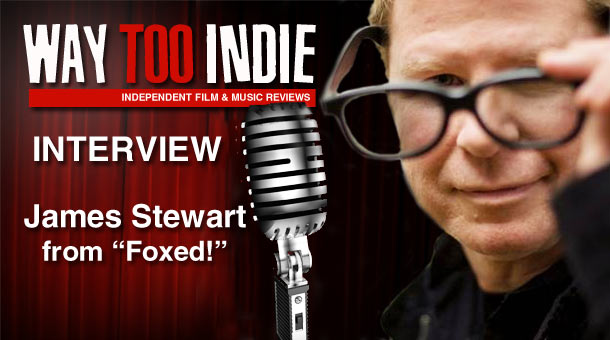
The implementation of stereoscopic 3-D in film is still a relatively new concept. It’s a polarizing subject, with most casual moviegoers having no problem throwing wads of cash at major studios for the chance to put on the infamously un-hip glasses, while most hardcore cinephiles denounce the technique as a distracting, gimmicky blotch on the history of cinema. 3-D movies have been hugely lucrative for major studios, but most 3-D films we see today are cash-grabs that abuse the technique so egregiously that it’s given 3-D a bad name. Even if there is a place for 3-D cinema in the mainstream marketplace, the technique certainly doesn’t belong in the world of micro-budget independent filmmaking…does it? How about classic films? Could Citizen Kane benefit from the 3-D treatment?
Hoping to find the answer to that (incredibly loaded) question, I thought I would speak with James Stewart (no, not that James Stewart, silly) to see if he could enlighten me. If you want to learn about 3-D cinema, Mr. Stewart is the guy to talk to. He is the co-director and producer of Foxed!, an enchanting independent short film shot in stereoscopic 3-D that played at this year’s SF Indiefest. He is also a pioneer in the world of 3-D cinema. As the head of Geneva Film Co., one of the most active 3-D film companies in the world, he is one of the world’s foremost experts on the subject.
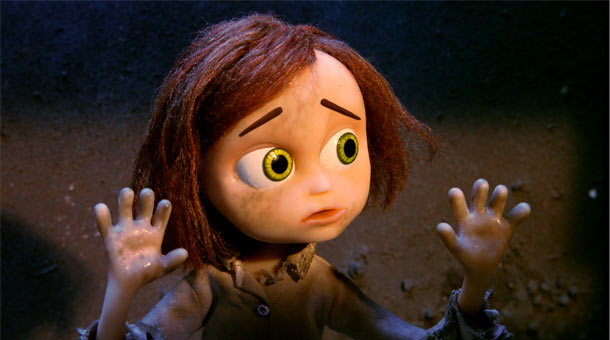
Stewart’s answers to my questions were always fascinating, sometimes shocking. He flies the 3-D flag proudly, and some of his answers are sure to ruffle the feathers of cinema traditionalists. It was a wonderful conversation that provided an intriguing look into the future of 3-D cinema. Am I convinced that 3-D should be used in all films? No, I can’t say that I am. BUT, while I used to think that 3-D had absolutely no place in the world of independent film, my mind has certainly been changed, thanks to Stewart’s insight and his amazing work on Foxed! and Werner Herzog’s unbelievable Cave of Forgotten Dreams, for which he and Geneva provided the 3-D effect.
To start our interview, I asked Mr. Stewart about Foxed!. He described the painstaking process of making a stop-motion animated 3-D film and how he was able to pull it off.
We thought we wanted to do (Foxed!) in stereoscopic 3d and we wanted to do it in stop motion…It’s a very expensive film to make, so we thought why don’t we do a short film, proof of concept…that at least shows…that it can be done… and then go on the journey of raising money for the feature film.
Foxed! was about two years in the making. It was 52 shoot days to do 3 mins of animation. (It was) very time consuming, as stop motion is, but we tried to contain it. We have 3 main characters and…three or four sets. We’ve had a great response from it from audiences and film festivals.
Stewart then described the differences of shooting live-action 3-D versus stop-motion animated 3-D films.
It’s a very different process. In live action 3-D, we use two cameras and they’re either side by side or they’re built into a mirror rig so it allows you to get very close to the subject for drama. Stop motion is a different process. Because you’re shooting one frame at a time, we actually use one camera (that is) on a motion-control plate, so it shoots one eye, slides over, and shoots the other eye. Because the process is so slow, it’s like one frame every ten or twenty minutes. We’re not really shooting any motion, so in a way, it’s simpler.
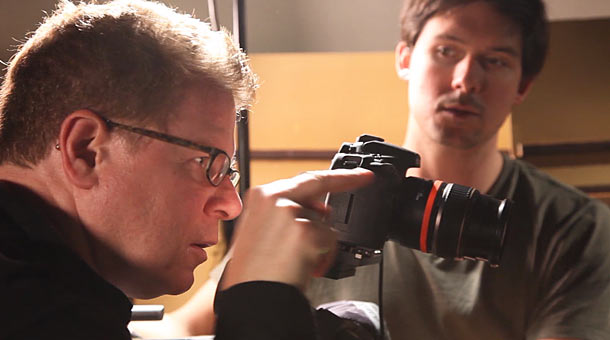
I then brought out the big guns. I asked him if he thought Citizen Kane, arguably the greatest work in the history of film, would be made better if it were converted to (or originally shot in) 3-D. His reply was a confident, definite Yes.
I think everything in the future should be shot in 3-D. It’s a very natural way for us to see the world. We have two eyes, we see depth. It’s a great way to experience visual content. Anything that has a visual story…should be in 3-D. Looking at an archival film like Citizen Kane, that film has a lot of depth in it already. We have a lot of depth cues when we shoot 2-D; we use lighting, we use perspective…we use all sorts of tricks to show depth. Your eyes know what’s closer to the lens and what isn’t. Your brain knows. Objects that move fast are closer than objects that move slowly, bigger objects are closer to the screen and smaller objects are farther away. Citizen Kane is essentially a 3-D film already, even though you’re not perceiving any actual depth. It would be spectacular if it was converted to 3-D.
I then asked him if 3-D could ever have a place in the micro-budget independent film scene. His answer was another resounding Yes, but only as long as the filmmakers understand the powerful tool.
I think that you can do anything as long as you have the skills and the time. In the 2-D world, we’ve come a long way. 16(mm) is how we used to shoot independent films, but even that was very expensive to get into that kind of production. It’s changed so dramatically. You can buy a camera (and not be) constrained by equipment rental issues and costs like that, so you can shoot a feature for almost nothing. 3-D is slightly different because you are, in a way, taking a step back within the technology. So, if you’re going to shoot it with two cameras, you need more technology to shoot it.
It’s hard for it to become as cheap as 2-D production, but we’re getting there. In the last five years we’ve gone from really big cameras and really big 3-D rigs down to consumer cameras that have two built in lenses! So, as long as you understand stereoscopy…you can shoot a low budget feature on a consumer camcorder that’s 3-D, or you can shoot it with two 5D (cameras) bolted together on a plate,…but you need to understand…how 3-D works.
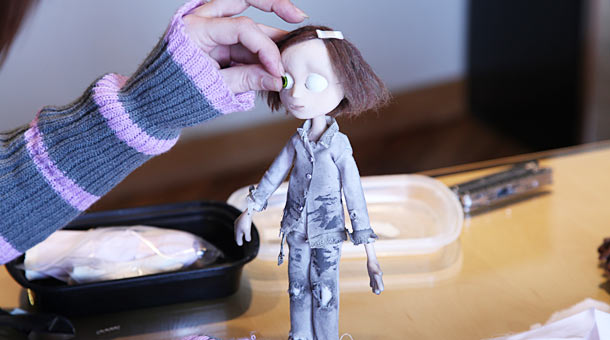
Next, I asked him what he thinks are the best examples of films using stereoscopic 3-D properly.
There (have) been really good examples on all levels. Avatar was a pretty good example of 3-D in the science fiction (genre). Life of Pi…is spectacular. Great storytelling, great use of depth, framing, and other tools of 3-D. Hugo, Scorsese’s film, was very, very good. Very nicely done. On the indie scene, Wim Wenders’…Pina (was a) really great use of modern dance and 3-D environments to tell a…very interesting story.
He then spoke about his work on Werner Herzog’s Cave of Forgotten Dreams and the status of 3-D on the independent scene.
We worked on Werner Herzog’s Cave of Forgotten Dreams. (It’s a) very special film, very important film, because he was allowed to go into the Chauvet caves in France and shoot the world’s oldest cave paintings in 3-D, something that no one will be allowed to do again. I think it’s one of the best indie films ever made in 3-D. What we’re seeing now on the indie 3-D scene is…people like Herzog, Wim Wenders, and Martin Scorsese, who Hollywood thinks is an indie filmmaker…working really beautifully in the art form. There are…artists out there working (with a) big budget or medium budget or indie (budget) who are doing really great visual storytelling with 3-D.
When I brought up films that abuse the 3-D technique, he stressed that 3-D is a tool just like any other filmmaking tool that filmmakers must treat with respect.
There’s always a tendency to throw things at the screen. You can do that, that’s fine, but for the most part, you want to really immerse the audience visually in the story. You don’t want to hurt their eyes, you don’t want to do anything that’s going to jeopardize their experience and their version of the story. We use color, we use editing, we use music, we use 3-D. It’s just another storytelling tool that you can use properly or not, depending who you are as a filmmaker.
I then asked how far away we are from seeing a feature-length version of Foxed!.
We just finished the short, and it’s just starting to play at film festivals, so it’s going to be out on the film festival circuit probably for the next year. We’re going to spend…a year trying to raise the money, and…if we get the money, it’s two years to make the film. So, it’s probably three years out.
When asked about how close we are to perfecting the technology and implementation of 3-D, he replied that 3-D is in its infancy, but that we are making steady progress.
I think we’re…right at the beginning of 3-D and understanding the power of it. Most filmmakers who work in 3-D say they’ll never go back because they…rediscover the filmmaking process (in a) very organic way. The blocking, the lighting. The camera movement takes on literally a whole new dimension when you’re working in 3-D. I think we’ve just scratched the surface.
We need more artists to take it seriously and to make films that are telling stories in a new way, and to use 3-D to do (it). Many filmmakers are. The studios typically are not, but we can…use visual cues that are enhanced by 3-D to tell great stories. I think we’re just at the beginning. The more serious filmmakers use 3-D,…the more the industry will grow, and the more people will (become) accustomed to it. Wim Wenders and Werner Herzog make films for older audiences (and that is) a huge step forward, as traditionally, 3-D films have been animated films for kids or horror films. (The more films that come out) by Ang Lee and Martin Scorsese, who make films that are…about storytelling…the more the art form improves and moves up a notch and finds a new audience. I think it’s early days. We have 3-D with glasses now, (but) we’ll very soon have 3-D without glasses. They already have glasses-free (3-D) on tablets and phones, and TV is not that far away. Then, we’ll add things like gesture control (and)…voice recognition (and) suddenly, you have organic storytelling where you can bring characters off the screen and interact with them. We’ve come a long way from projecting black and white film on a screen.
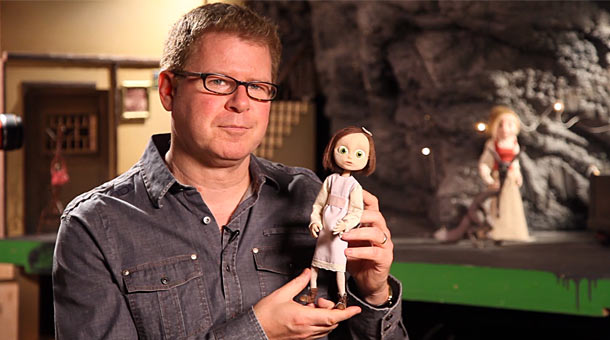
Watch the trailer for “Foxed!”:
Official site of Foxed!: www.foxedmovie.com
STAY TUNED to Way Too Indie for our review of Foxed! along with other shorts from SF Indiefest.
